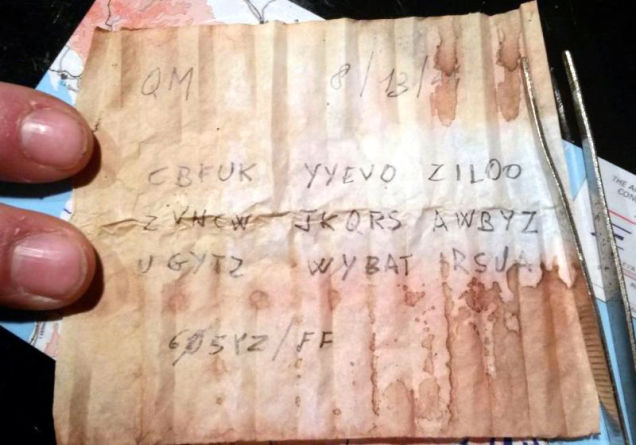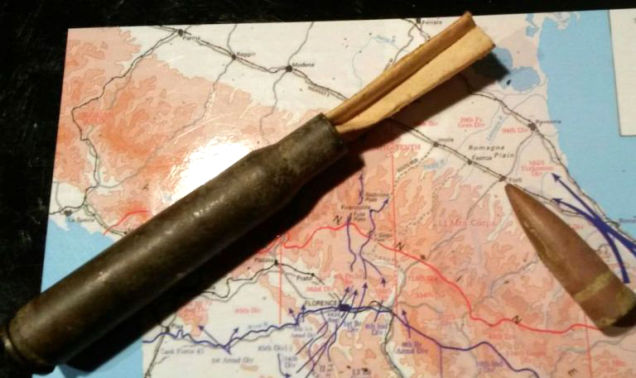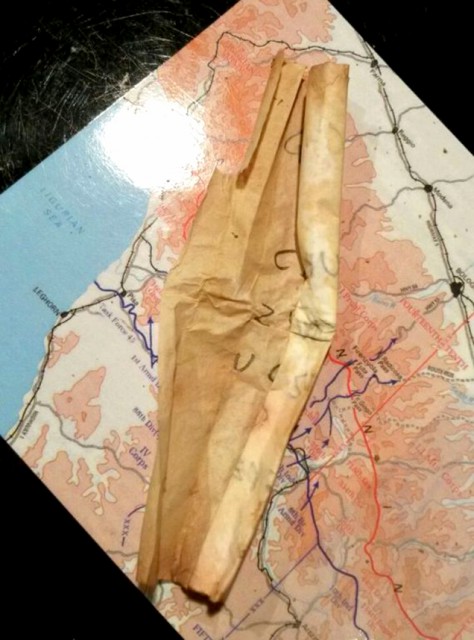A World War Two bullet containing a message from Nazi troops has been found on the site of a battlefield in Italy.
In the late summer of 1944 British troops were occupying Florence, and Allied troops had broken through German-occupied Normandy lines. In Tuscany in central Italy, German and American troops were battling it out on the southern Front. It is here that 70 years later Italian war enthusiasts armed with metal detectors and shovels found a cartridge with a message in it written in German. In some countries mining for war artefacts is illegal and is not welcomed by archaeologists, but in Italy it is allowed.
Enthusiasts recovering a range of artefacts from the site came across a bullet that had been inverted into its case. They recovered the case and returned home; when they opened it they found a small piece of paper with a message written in German, the Sploid reports.
Historians say that this was a common method of transferring encoded information and instructions during World War One, and it continued through to World War Two. The message sender would remove the bullet from its cartridge and empty out the powder. He would then roll up the encoded message and place it into the empty shell. It was the ideal hiding place because the case containing the message could be mixed in with other cartridges; if the men were captured the secret cases were easy to dispose of.
The recovered message was posted on an online forum to see if anyone knew what it meant. One answer came from a man whose grandfather served in Italy; this man had inherited his grandfather’s army equipment, including code books. He said the message was from an officer who was coordinating troops and read ‘They throw grenades; we pull pins and throw back. Notify reinforcements stand down – not needed’.
Historians and war experts looking at the message have come to the conclusion that this must be in regard to the equipment being used by the German and American forces fighting in Italy. By 1944 there were very few Italian forces actually fighting in Italy, but Italian-made equipment and arms were still in use by the occupying forces, since pro-Mussolini backers would have been arming the German troops.
However, Italian-made hand grenades were fitted with two pins that needed to be pulled in order for them to detonate. Both American and German-made grenades had only one pin. The message suggests that Italian grenades were being used during 1944 battles, but the troops were still only pulling one pin, which meant they weren’t detonating — the Americans were throwing them back with the final pin withdrawn, and detonating the grenades onto the German lines.


